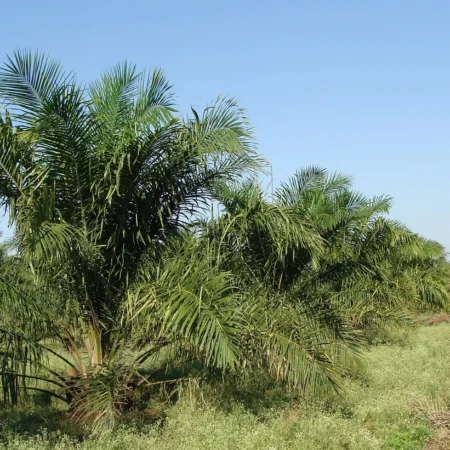Paleoclimatology and Relevance To Modern Day Climate Studies
Introduction
Paleoclimatology is the study of climates for which direct measurements were not taken (Bradley, 2014). As instrumental records only span a tiny part of Earth history, the reconstruction of ancient climate is important to understand natural variation and the evolution of the current climate.
Paleoclimatology uses a variety of proxy methods from the Earth and life sciences to obtain data previously preserved within rocks, sediments, boreholes, ice sheets, tree rings, corals, shells, and microfossils. Combined with techniques to date the proxies, these paleoclimate records are used to determine the past states of Earth’s atmosphere.
The scientific field of paleoclimatology came to maturity in the 20th century. Notable periods studied by paleoclimatologists are the frequent glaciations the Earth has undergone, rapid cooling events such as the Younger Dryas, and the fast rate of warming during the Paleocene-Eocene Thermal Maximum. Studies of past changes in the environment and biodiversity often reflect on the current situation, specifically the impact of climate on mass extinctions and biotic recovery and current global warming (Cronin, 2010).
Climatology which is the study of different climatic parameters such as rainfall and precipitation makes use of data of past and present climates in order to better understand climatic changes and able to predict future climatic pararmeters.
A) Studying paleoclimatology using proxies
1.Ice.
Mountain glaciers and the polar ice caps/ice sheets provide much data in paleoclimatology. Ice-coring projects in the ice caps of Greenland and Antarctica have yielded data going back several hundred thousand years, over 800,000 years in the case of the EPICA project.
Air trapped within fallen snow becomes encased in tiny bubbles as the snow is compressed into ice in the glacier under the weight of later years’ snow. The trapped air has proven a tremendously valuable source for direct measurement of the composition of air from the time the ice was formed.
Layering can be observed because of seasonal pauses in ice accumulation and can be used to establish chronology, associating specific depths of the core with ranges of time. Changes in the layering thickness can be used to determine changes in precipitation or temperature. Oxygen-18 quantity changes (δ18O) in ice layers represent changes in average ocean surface temperature.
2.Dentroclimatology
Climatic information can be obtained through an understanding of changes in tree growth. Generally, trees respond to changes in climatic variables by speeding up or slowing down growth, which in turn is generally reflected by a greater or lesser thickness in growth rings. Different species, however, respond to changes in climatic variables in different ways.
A treering record is established by compiling information from many living trees in a specific area. Older intact wood that has escaped decay can extend the time covered by the record by matching the ring depth changes to contemporary specimens. By using that method, some areas have tree-ring records dating back a few thousand years. Older wood not connected to a contemporary record can be dated generally with radiocarbon techniques. A tree-ring record can be used to produce information regarding precipitation, temperature, hydrology, and fire corresponding to a particular area
(Cronin, 2010)
3 Sediment Content
On a longer time scale, geologists must refer to the sedimentary record for data. Sediments, sometimes lithified to form rock, may contain remnants of preserved vegetation, animals, plankton, or pollen, which may be characteristic of certain climatic zones.
Biomarker molecules such as the alkenones may yield information about their temperature of formation. Chemical signatures, particularly Mg/Ca ratio of calcite in Foraminifera tests, can be used to reconstruct past temperature.
4 Sedimentary Faces
On a longer time scale, the rock record may show signs of sea level rise and fall, and features such as “fossilized” sand dunes can be identified. Scientists can get a grasp of long term climate by studying sedimentary rock going back billions of years. The division of earth history into separate periods is largely based on visibl changes in sedimentary rock layers that demarcate major changes in conditions. Often, they include major shifts in climate (Bradley, 2014).
5.Sclerochronology
Coral “rings” are similar to tree rings except that they respond to different things, such as the water temperature, freshwater influx, pH changes, and wave action. From there, certain equipment can be used to derive the sea surface temperature and water salinity from the past few centuries.
The δ18O of coralline red algae provides a useful proxy of the combined sea surface temperature and sea surface salinity at high latitudes and the tropics, where many traditional techniques are limited (Halfar et al., 2008).
6.Landscapes and Landforms
Within climatic geomorphology one approach is to study relict landforms to infer ancient climates. Being often concerned about past climates climatic geomorphology is considered sometimes to be a theme of historical geology.
Climatic geomorphology is of limited use to study recent (Holocene) large climate changes since there are seldom discernible in the geomorphological record (Gutierrez, 2005).
7.Timing Proxies
The field of geochronology has scientists working on determining how old certain proxies are. For recent proxy archives of tree rings and corals the individual year rings can be counted and an exact year can be determined. Radiometric dating uses the properties of radioactive elements in proxies. In older material, more of the radioactive material will have decayed and the proportion of different elements will be different than of newer proxies.
B) Major Paleoclimatic Periods
1.Cenozoic Climate Change
The Cenozoic Era, the time since extinction of dinosaurs at the end of the Cretaceous Era, illustrates the huge magnitude of natural climate change. The early Cenozoic was very warm—indeed, Polar Regions had tropical-like conditions with alligators in Alaska (Markwick 1998). There were no large ice sheets on the planet, so sea level was about 70 m higher than today.
2. Precambrian Climate
The climate of the late Precambrian showed some major glaciation events spreading over much of the earth. At this time the continents were bunched up in the Rodinia supercontinent. Massive deposits of tillites and anomalous isotopic signatures are found, which gave rise to the Snowball Earth hypothesis. As the Proterozoic Eon drew to a close, the Earth started to warm up. By the dawn of the Cambrian and the Phanerozoic, life forms were abundant in the Cambrian explosion with average global temperatures of about 22°C (Earle, 2016).
3.Quaternary Climate
The Quaternary geological period includes the current climate. This period has been characterized by increase atmospheric greenhouse gas concentration due to the industrial revolution and development, driven by the exploding world population and the consumerism habit of man.
This era is witnessing an increase in the global temperatures (global warming) evident through polar ice melts and seas level rise and climate change is threatening the very existence of man.
C) Notable Climate Events in Earth History
Knowledge of precise climatic events decreases as the record goes back in time, but some notable climate events are known:
1) Faint Young Sun Paradox (start)
2) Huronian Glaciation (~2400 Ma Earth completely
covered in ice probably due to Great Oxygenation Event)
3) Later Neoproterozoic Snowball Earth (~600 Ma,
precursor to the Cambrian Explosion)
4) Andean-Saharan Glaciation (~450 Ma)
5) Carboniferous Rainforest Collapse (~300 Ma)
6) Permian-Triassic Extinction Event (251.4 Ma)
7) Oceanic Anoxic Events (~120 Ma, 93 Ma, and others)
8) Cretaceous-Paleogene extinction event (66 Ma)
9) Paleocene–Eocene Thermal Maximum (PaleoceneEocene, 55Mya)
10) Younger Dryas/The Big Freeze (~11,000 BC)
11) Holocene Climatic Optimum (~7000-3000 BC)
12) Extreme weather events of 535-536 (535-536 AD)
13) Medieval Warm Period (900-1300)
14) Little Ice Age (1300-1800)
15) Year without a summer (1816)
D) Relevance of Paleaoclimatology to Modern day Climate studies
The paleoclimatic history of the earth is rich in background information that helps present and future climatic studies. Earth’s paleoclimate history is remarkably rich in information on how man has huge impact on the environment and altering climatic parameters through the increase use of fossil furls and increase GHG concentration.
This paleaclimatic history has made us understand the glacial-to-interglacial climate swings. Paleoclimatology is relevant to modern day climatology studies through the following ways.
1.Importance of Paleoclimate data
Paleoclimate data yield remarkably rich and precise information on climate sensitivity and yield an accurate evaluation of the dangerous level of global warming. The IPCC analyses contributed to a European Union (2008) decision to support policies aimed at keeping global warming less than 2C relative to preindustrial time shows the evidence of a growing concern on the current rate of global warming. This is because the current rate of warming is very high when matched with past climatic trends.
The paleoclimate record is also a good source of information on the level of global warming that will eventually yield a markedly different planet than the one on which civilization developed. Paleoclimate data help us assess climate sensitivity and potential human-made climate effects. We conclude that Earth in the warmest interglacial periods of the past million years was less than 1ºC warmer than in the Holocene.
Polar warmth in those interglacials and in the Pliocene does not imply that a substantial cushion remain between today’s climate and dangerous warming, but rather that Earth is poised to experience strong amplifying polar feedbacks in response to moderate additional global warming.
2.Sea Level Change Over The Past Century
IPCC (2007) projected sea level rise by the end of this century of about 29 cm. These projections did not include contributions from ice sheet dynamics, on the grounds that ice sheet physics is not understood well enough.
Rahmstorf (2007) made an important contribution to the sea level discussion by pointing out that even a linear relation between global temperature and the rate of sea level rise, calibrated with twentieth century data, implies a twenty-first sea level rise of about a meter, given expected global warming for greenhouse gas emissions.
3.Ice Sheet Mass Loss
The best indication and quantification of possible nonlinear behavior will be precise measurements of ice sheet mass change. Mass loss by the Greenland and Antarctic ice sheets can be deduced from satellite measurements of Earth’s gravity field shows the changing mass of both ice sheets as reported by Velicogna (2009).
These data records suggest that the rate of mass loss is increasing, indeed nearly doubling over the period of record. Also there is substantial variation among alternative analyses of the gravity field data (Sorensen and Forsberg 2010), although all analyses have the rate of mass loss increasing over the period of record.
4.Modern Day climate Studies
Paleoclimatology made use of rudimentary ways of studying past climates which helped climatologists to understand past climatic patterns. With technological evolution, modern day climate studies have been made easy.
This is through the use of modern methods and philosophies and with modern tools like satellites and remote sensing. Modern ways of data collection and treatment has made climatology studies more efficient especially in prediction and forecast.
The 20th century has been plagued with the debate of climate change which has been made worst by the increase use of fossil fuels and increase greenhouse effect. Since after the world wars, man has been continuously ploughing the earth for resources especially fossil fuels for power. Coupled with the increase population, the ever increasing consumerism nature of man puts a constant pressure on earths resources.
Climate change, made worst by man has seen a rise in sea levels due to melting ice, global warming, fluctuation rainfall patterns, desertification amongst others. The El Nino, southern oscilation has also come to change global temperatures and air circulations.
The present global retreat of glaciers is unparalleled during the Holocene, and disagrees with the expected natural forcing mechanisms favouring larger regional variability due to changes in temperature and precipitation.
Exceptional warmth of the late 20th century, relative to the past 1000 years”. Subsequent evidence reinforces this conclusion. Indeed, it is very likely that average Northern Hemisphere temperatures during the second half of the 20th century were warmer than any other 50-year period in the last 500 years.
It is also likely that this was the warmest period in the past 1000 years and unusually warm compared with the last 2000 years. The uneven coverage and characteristics of the proxy data mean that these conclusions are most robust over summer, extra-tropical, land areas. Taken together, the very sparse evidence for Southern Hemisphere temperatures prior to the period of instrumental records indicates that it is likely that the warmth of the last 50 years is unusual in a 350 to
1000-year context. Paleoclimatic reconstructions and simulations of the last 1000 years point to the increasing importance of greenhouse gases as the cause of unprecedented recent warming.
Furthermore, early instrumental data, mostly from Europe, show that 1980–2004 is very likely the warmest 25-year period during the last 280 years. Most coral records currently available from the tropical Indo-Pacific, and stretching continuously back from the late 20th century, suggest unusual warmth in the late 20th century
5.Future Climates
Post-industrial levels of atmospheric CO2 and have risen far above the levels found in the longest (up to 800,000 years) ice-core records, highlighting the fact that the recent unprecedented rise in these trace gases does not stem from natural mechanisms. Over these multi-millennia time scales, Antarctic temperature and CO2 co-vary with each other.
There is no evidence that the current warming will be mitigated by a natural cooling trend towards glacial conditions. Understanding of orbital forcing indicates that the earth would not naturally enter another ice age for at least 30,000 years. Rising atmospheric CO2 may delay or prevent the earth from entering the next anticipated ice age.
Strong evidence, both from sediment data and from modeling, links abrupt climate events to changes in the Atlantic Ocean circulation, although details of the mechanism are still under discussion.
E) Conclusion
Past climate studies have been very essential in modern day climate studies. This is seen through prediction and forecast models to keep man prepared for any eventualities. With technological advancements, man has been able to better understand the present-day climate and matching it with past events, a near accurate forecast can be made. Therefore, despite the short comings in the availability of accurate data on past climates, its understanding is ever important for the understanding of present and future climates.
F) References
Cronin, T.M. (2010): Paleoclimates: Understanding climate change past and present. Columbia University Press; 448p.
Davis, B.A.S., Brewer, S., Stevenson, A.C. and Guiot, J. (2003): The temperature of Europe during the Holocene reconstructed from pollen data. Quaternary Science Reviews; 22(15-17): 1701-1716.
Earle, S. (2016): Physical geology. Create Space Independent Publishing Platform; 628p.
C. Hargreaves and J. D. Annan Global Change Projection Research Program, Research Institute for Global Change, JAMSTEC, 3173-25 Showa-machi, Kanazawa-ku, Yokohama City, Kanagawa, 236-0001, Japan
Hargreaves, J. C., Abe-Ouchi, A., and Annan, J. D.: Linking glacial and future climates through an ensemble of GCM simulations, Clim. Past, 3, 77–87, 2007, http://www.clim-past.net/3/77/2007/.
Jolly, D., Harrison, S., Damnati, B., and Bonnefille, R.: Simulated climate and biomes of Africa during the late quaternary comparison with pollen and lake status data, Quaternary Sci. Rev., 17,629–657, 1998.
Mackay, A., R. Battarbee, J. Birks, and F.e. Oldfield, 2003: Global Change in the Holocene. Hodder Arnold, 2 480 pp.
IPCC, 2001: Climate Change 2001. Cambridge University Press, Cambridge.
Osama R. Shaltam. 3rd International Symposium on Paleoclimatology 27th July 2020.











Leave a Reply